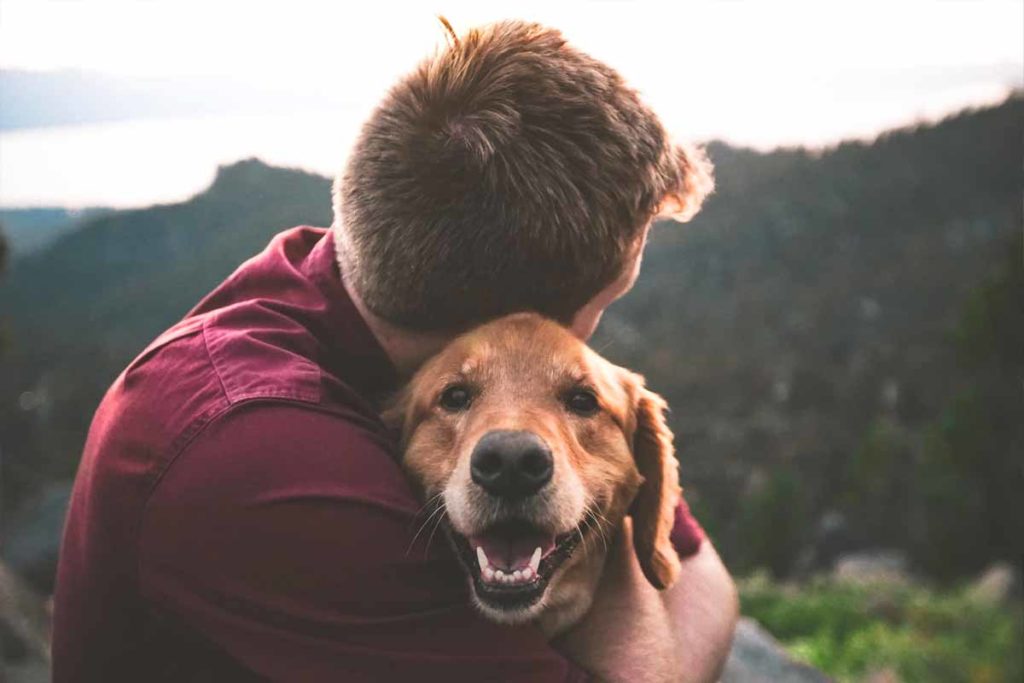There is nothing like the comfort of companionship provided by our dogs during the uncertainty of COVID-19 lockdowns. The pandemic brought dramatic changes in our lives, as well as our dogs’. Not only was there a surge in pet adoptions during this past year, but we spent more time with our pets, providing them with more daily attention than ever before.
What happens, though, as COVID-19 restrictions are lifted and we return to school and the office? Many of us are eager to return to activities outside of the home, but our dogs may not be so thrilled to have us gone again. Your pet does not know what a “stay-at-home” order is, so here’s how we can ease our dogs through this transition and provide them with the support they deserve to mitigate separation-related anxiety.
What is Separation Anxiety in Dogs
The highly anticipated return to pre-pandemic life may be stressful for our pets, who grew accustomed to having us around 24/7. As dogs are left at home, they may experience separation-related anxiety. Separation anxiety is a behavioral syndrome of dogs characterized by signs of distress when the affected dog is left alone or separated from the person or people it is attached to.
A marketing survey of dog owners indicated that 17% of dogs that receive regular veterinary care exhibit clinical signs consistent with separation anxiety. The disorder is diagnosed in 20% to 40% of dogs that present to specialty behavior clinics. While it is common and may be brought on by lifted COVID-19 restrictions, separation anxiety is not the only form of anxiety your canine companion can experience. Other categories for canine anxiety include:
- Generalized anxiety: this often appears “out of the blue” with no known cause or trigger, even in well-trained dogs
- Environmental Anxiety: This presents as a fear of a specific location or in response to specific stimuli such as loud noises like fireworks or a thunderstorm
- Social Anxiety: This presents as being anxious about being around different people or other dogs.
Is My Dog at Risk for Separation Anxiety
No singular factor is a predictor for the severity or presence of separation anxiety in dogs. There are, though, some circumstances that predispose our pets to develop the problem, such as:
- Senior Pets: Generally speaking, senior pets have higher levels of anxiety. As their ability to tolerate change diminishes, variations in their routines are more likely to be distressing.
- Newly Adopted Pets: Studies suggest that dogs from shelters have a higher rate of separation anxiety. Pets who have recently experienced upheavals need help to ease the stress of transition into new household routines. Further, many recently adopted pets have never experienced post-pandemic life with their owner – these dogs may require patience as they learn to be by themselves.
- Puppies: In a similar vein to newly adopted pets, these dogs may not know a post-pandemic world. That said, they provide an opportunity for prevention as a puppy is most easily affected by new experiences, so this is a critical time for developing their independence.
Does My Dog Have Separation Anxiety?
Even if your pet fits one or more risk categories, they do not necessarily have separation anxiety. Since your pet cannot tell you they wish you wouldn’t leave so often, here are some signs that your dog is suffering from separation-related anxiety.
- Behavioral contrast: A dog with separation anxiety typically displays marked contrast in behavior when alone versus in the presence of its owner.
- Destructiveness
- Elimination in the home
- Hypersalivation
- Distress vocalizations
- Escape behaviors that result in self-trauma
- Hyper Attachment
- Pacing
In one 2008 study on canine separation-related anxiety, the researchers outlined three subclasses of separation-related anxiety:
- Hyper Attachment: These dogs demonstrate primary hyper attachment to at least one person, and when these dogs are left alone, signs of destructiveness are often oriented toward the door through which the owner leaves or an item with the owner’s scent.
- Change in Routine: These dogs are upset by a change in routine or as a result of aging. When these dogs are separated from a person on whom they depend, signs of anxiety include departure distress, agitation or depression, and escape attempts.
- Coinciding Anxieties: These dogs do not demonstrate dependency behaviors; instead, separation-anxiety onset coincides with a fearful or phobic experience when left alone; signs include urination or defecation or attempts to hide.
The diagnosis of these anxieties is made based on behavioral history and the exclusion of diagnostic differential at the vet’s discretion. For a definitive diagnosis, these behaviors must be restricted to times when the dog is left alone or separated from an attachment figure.
What Can You Do to Help Your Dog?
- Try to Eliminate Departure and Arrival Cues: When your dog develops associations with you departing, like you putting on your shoes or gathering your belongings, this may induce an anxious reaction. To combat this, minimize these cues by jingling your keys or putting on your shoes and then staying home.
- Counter Condition: When you leave, reward your pet with a special treat they can enjoy alone – this will condition them to have positive associations with alone time and give them something else to focus on rather than your departure.
- Gradual Desensitization: Little by little, leave your pet alone. This could be by actually leaving the house or just going to another room. This will build your dog’s independence and allow for a gradual transition into mitigating fear in your dog when they are alone.









